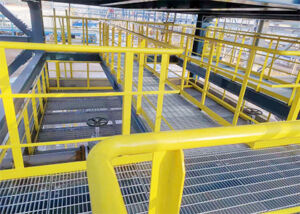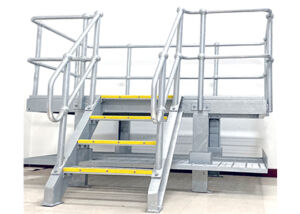How to customize steel grating is a common question for those in the construction and industrial fields. Steel grating is a versatile and durable material that is used in a variety of applications, from flooring to drainage systems. Customizing steel grating allows for a tailored solution to specific needs, whether it’s for a commercial building or an industrial facility.
The first step in customizing steel grating is to determine the specific requirements for the project. This includes the type of grating needed, the dimensions, the load requirements, and any special features such as non-slip surfaces or serrated edges. Understanding these requirements is crucial in ensuring that the customized steel grating will meet the needs of the project.

Once the requirements are defined, the next step is to work with a reputable steel grating manufacturer or supplier to create a customized solution. This involves collaborating with engineers and designers to develop detailed drawings and specifications for the customized grating. It’s important to choose a manufacturer with a proven track record in producing high-quality customized steel grating.
During the customization process, it’s essential to consider factors such as material type, surface treatment, and fabrication methods. উদাহরণস্বরূপ, the choice between carbon steel, মরিচা রোধক স্পাত, or aluminum will depend on the specific application and environmental factors. Surface treatments such as galvanization or powder coating can enhance the durability and corrosion resistance of the steel grating.
Fabrication methods such as welding, swage-locking, or riveting will also impact the performance and appearance of the customized steel grating. Working closely with the manufacturer to select the most suitable materials and fabrication methods is crucial in achieving the desired outcome. The goal is to create a customized steel grating that not only meets the functional requirements but also aligns with the aesthetic and architectural vision of the project.
In addition to the material and fabrication considerations, customization may also involve special features such as cutting, bending, or shaping the steel grating to fit unique layouts or structural requirements. This may require advanced cutting and shaping technologies such as water jet cutting or laser cutting, depending on the complexity of the customization needs.

Quality control and testing are integral parts of the customization process. It’s essential to ensure that the customized steel grating meets industry standards and performance requirements. This may involve various tests such as load testing, deflection testing, and surface integrity testing. Working with a manufacturer that has a comprehensive quality control process is essential in achieving a customized steel grating that meets the highest standards of quality and performance.
Once the customized steel grating is fabricated and tested, the installation process begins. This involves careful planning and coordination to ensure that the customized grating is installed correctly and securely. It’s important to follow the manufacturer’s installation guidelines and recommendations to maximize the performance and longevity of the customized steel grating.
উপসংহারে, customizing steel grating is a detailed and intricate process that requires careful consideration of various factors. From defining project requirements to collaborating with experienced manufacturers, every step plays a crucial role in achieving a customized steel grating that meets the highest standards of quality, performance, and durability.

